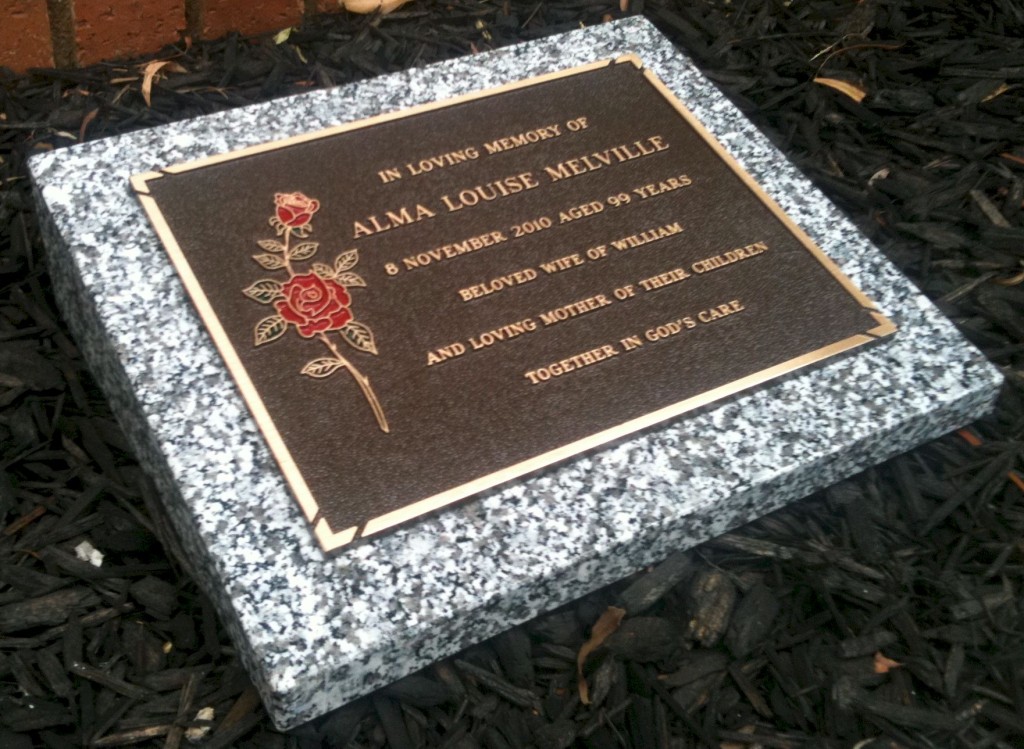Memorial plaques are commonly used on graves to either reduce inscription costs or provide the space for longer messages. The majority of plaques are made from bronze due to its resilience over other materials; however, granite options are also available. When fixed directly to the ground they are commonly known as flat/slant markers.
Aside from the look the primary difference between granite and bronze are the rules and regulations regarding the installation. Church yards may prefer to keep the grounds traditional and won’t allow shiny materials; this could also include polish granite. Even though the plaque is merely a small aspect of the gravestone, it’s always worth checking with the parish to ensure they are permitted.
Granite Memorial Plaques
Granite memorial plaques are ideal if you can’t afford a larger gravestone or want a temporary solution while the ground is settling. There are two main benefits of using granite; the wide array of colours and finishes (red, blue and grey are the most common) and the price. Generally speaking granite is the most widely available material, and therefore the most affordable.
Inscriptions in granite memorial plaques for graves are usually etched using laser engraving machines; however, there are still a great deal of suppliers that will carve by hand if you’d prefer a more personal touch. Sometimes the imperfections of manual engraving is what gives a plaque charm.
Bronze Memorial Plaques
Bronze memorial plaques for graves are often used when there isn’t enough room for the desired inscription or image. Bronze plaques require a great deal of manual labour; creating the artwork, making the cast, casting the molten bronze, etc., therefore, they can be a lot more expensive than stone options. In addition the price of bronze has significantly increased over the past ten years (roughly 500%).
Bronze plaques require annual maintenance in order to reduce the affects of weathering; but you can pay a little extra for a lacquer finish. This will, however, deteriorate over time and have to be reapplied. In addition, bronze plaques should be cleaned and waxed on an annual basis. Although they will naturally turn darker in colour, regular maintenance will ensure they are protected from rapid deterioration.
Maintaining Memorial Plaques
To clean plaques fill a container with distilled water and a little non-ionic soap. Use either a soft sponge or natural bristled brush to apply the cleaning solution and scrub off the dirt. Rinse the plaque with distilled water and wipe it dry with a flannel cloth. Coat the surface of the plaque with wax using a sponge, and then buff it to a shine.
If possible remove the plaque before you start the cleaning process and give the back the same attention as any of the visible areas. Do not clean bronze plaques any more than once per year.
The plaque is the most important element of any gravestone; therefore, great care should be taken when selecting the style and inscription. Before you make any decisions contact your local parish or cemetery; check out the surrounding graves; and get quotes from suppliers. Remember, there’s no need to rush, it takes some people years to decide what style to use or what message to inscribe.

Image Credit: Plaques.net
Image Caption: A typical bronze memorial plaque on a slant marker.